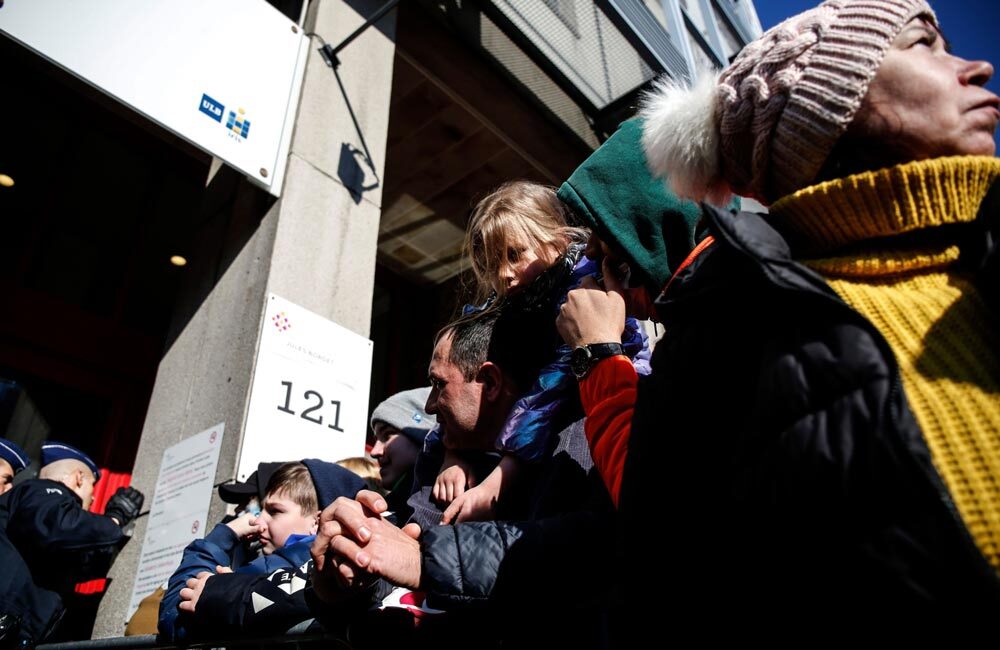Investors have few places to hide in an increasingly volatile and risky market, experts say.
Volatility has effectively doubled since the beginning of January, with the Chicago Board Options Exchange’s CBOE Volatility Index hitting 32.78 by midday Monday. The last time the index reached these heights was ahead of the 2020 election, in October of that year.
Meanwhile, a unique combination of heightened geopolitical risk due to the ongoing Russia-Ukraine conflict, rising inflation, and the threat of a Wednesday interest-rate hike have forced investors to rethink their portfolio holdings.
Michael Hunstad, Northern Trust’s head of quantitative strategies, called it a “double whammy,” although triple or quadruple might be more accurate. “We know rates are going to rise,” he said. “We know there are higher levels of inflation. We have all this geopolitical risk we want to back away from. There aren’t many places to run and hide.”
According to Tina Byles Williams, the founder, CEO, and CIO at investment management firm Xponance, geopolitical risk and inflation have not been major concerns for investors for the better part of 30 years. “Those two things are back, and they’ll be back with a vengeance,” she said.
So what’s an investor to do? According to Hunstad, commodities and natural resources are typically good investments in this type of environment, but there is a question of whether it is too late to put capital to work there.
Brett Friedman, managing partner at Winhall Risk Analytics, agrees that there is a real risk to putting capital into commodities, agriculture, or natural resources at this point. If the war ends abruptly or peters out, “commodities are going to drop like a rock,” he said. “You’ll see crude go back to where it came from. People who buy volatility will just be destroyed.”
Equities, too, aren’t easy to play right now. According to Garrett DeSimone, head of quantitative research at OptionMetrics, investors are de-risking in certain sectors like tech to avoid rate-sensitive companies. This equity de-risking, coupled with money flowing into fixed-income assets, is a classic move in markets like this, Hunstad said.
“Your first inclination might be well, if there’s going to be equity market volatility, just go buy a bunch of utilities, REITs, and consumer staples,” Hunstad said. “Those tend to be more stable. That is partially true. The problem with that strategy is that those same defensive securities also happen to have a lot of interest-rate susceptibility.”
According to Hunstad, Northern Trust clients want to maintain their equity exposures, but within that allocation, are shifting away from European and emerging markets and into U.S. equities. Some have considered increasing their TIPS exposure in the short term.
Byles Williams, meanwhile, suggested “anti-fragile assets,” which include managed futures hedge funds, real estate, infrastructure, and gold. Friedman noted that options could also become more expensive. He suggested structuring a short-term hedge to take advantage of downside volatility.
Investors will also have to grapple with whether they can continue to invest in emerging markets as they have in the past. According to Byles Williams, this may mean that investors change how they put capital to work abroad. “It challenges the notion of passive exposures to emerging markets,” she said. “I think the notion of low-cost investing in the emerging markets from a fee perspective will be challenged by other costs.”
The outsize reaction of Western countries to the conflict in Ukraine adds additional risk to investing in these markets. After all, if a block of nations can essentially cut off Russia from the financial system, they could do the same thing in other conflicts. “The reaction of the global economy was just unprecedented,” Hunstad said. “Most asset managers value [Russian] securities at zero. What would happen if that happened with China? Does it make sense from an asset-allocation perspective to be in the emerging markets?”
Northern Trust isn’t done with China yet, however. Hunstad said he believes there are still opportunities to invest in the country — if it’s done carefully. But regardless of whether an investor changes their allocations to emerging markets, it’s clear that the investment environment has shifted dramatically over the past month.
“It’s kind of like we’re all in water and our water for the last 30 years has been low inflation [and low] geopolitical risk,” Byles Williams said. “Any spike up in either one of those was perceived as a temporary blip, and that’s been our water. I would argue that the water is changing. It will change gradually but change nonetheless.”







